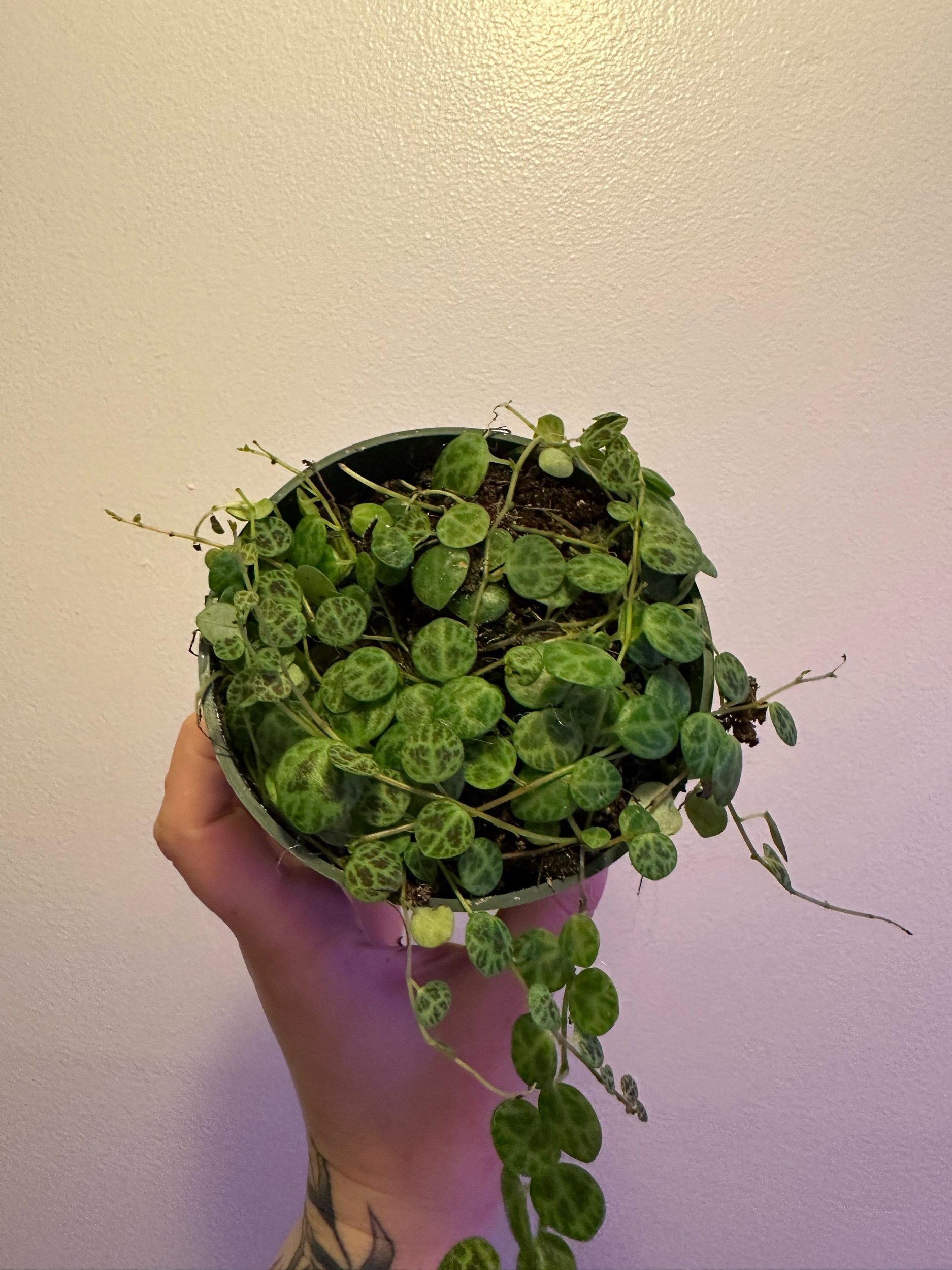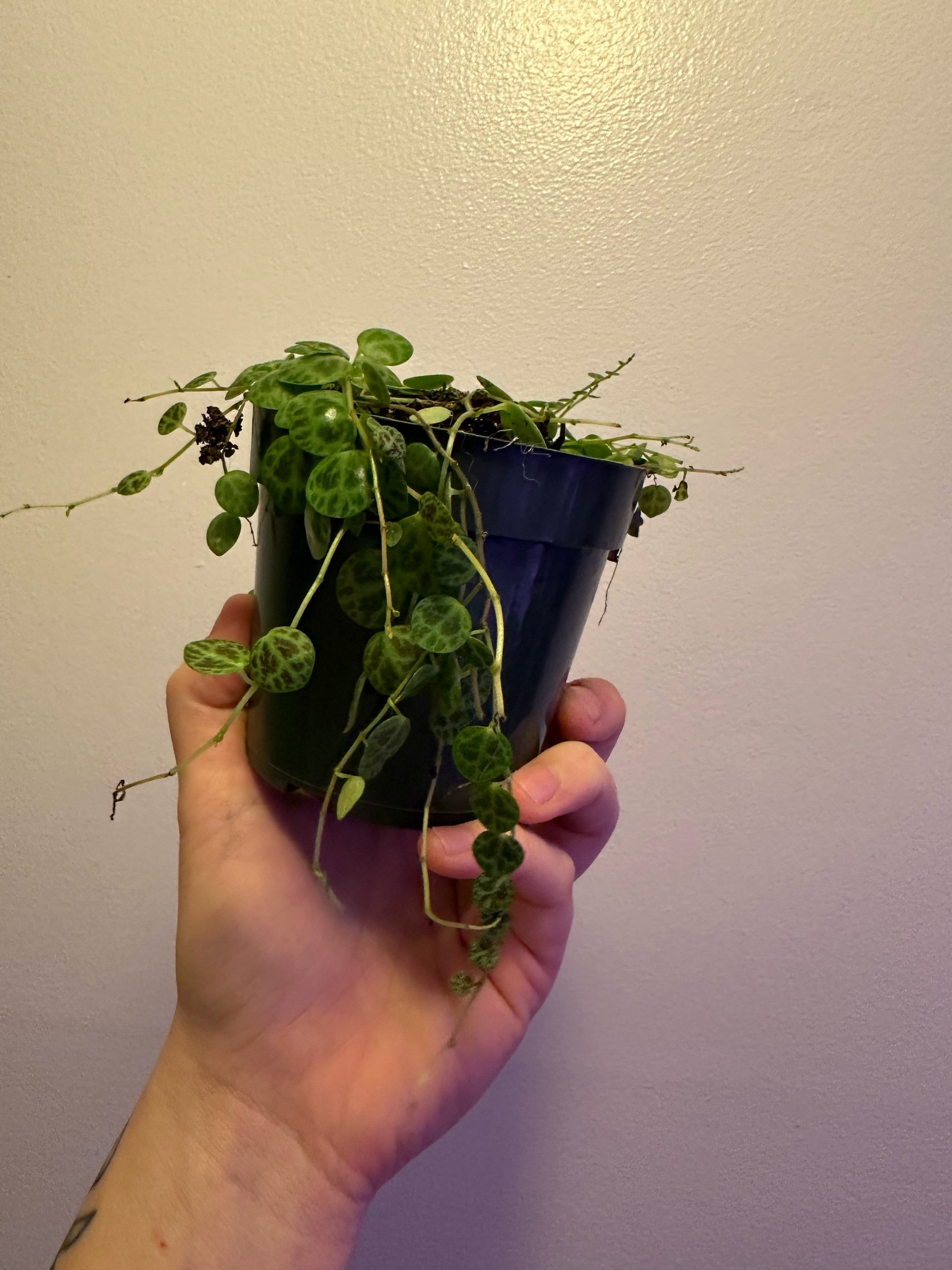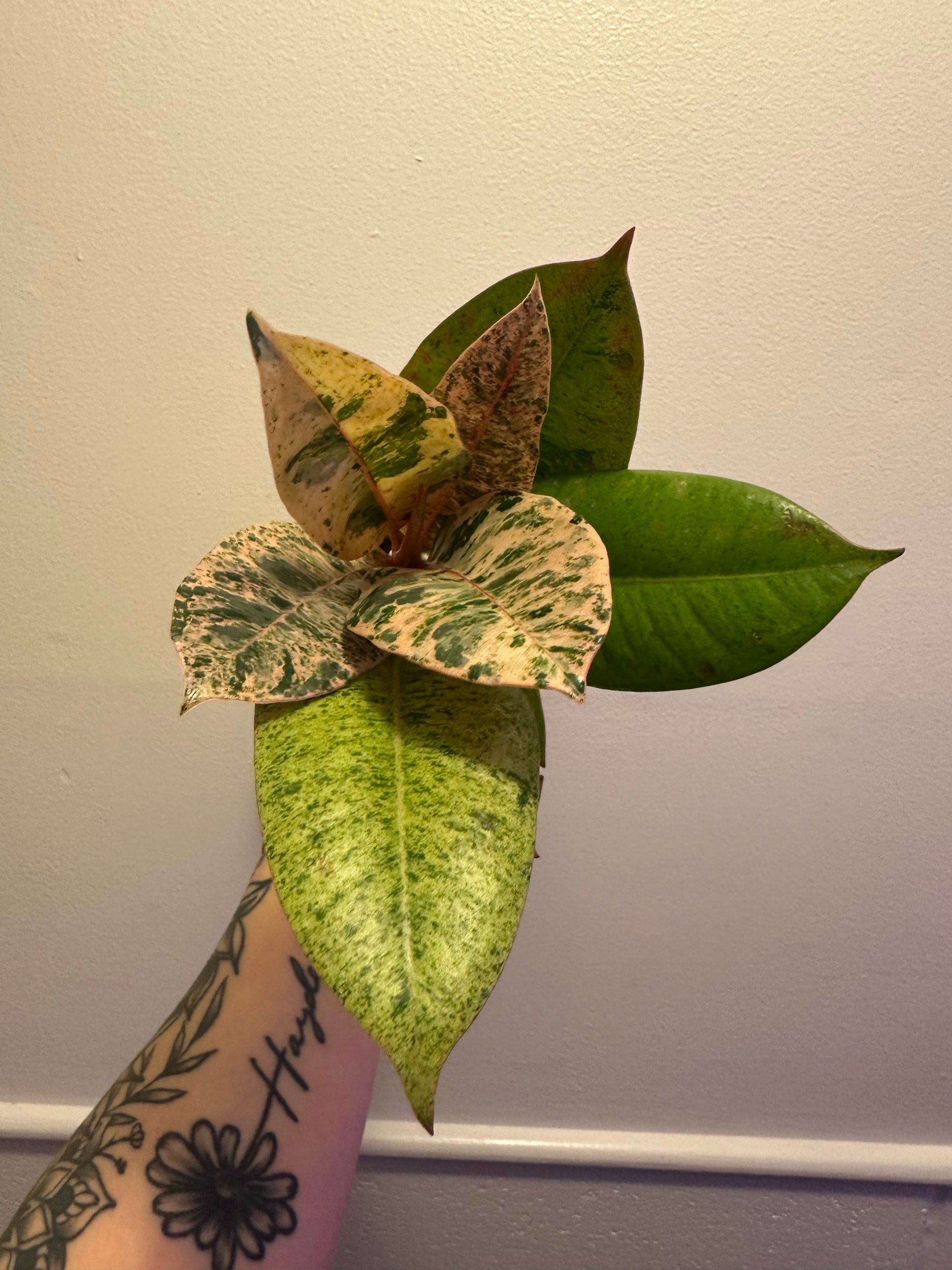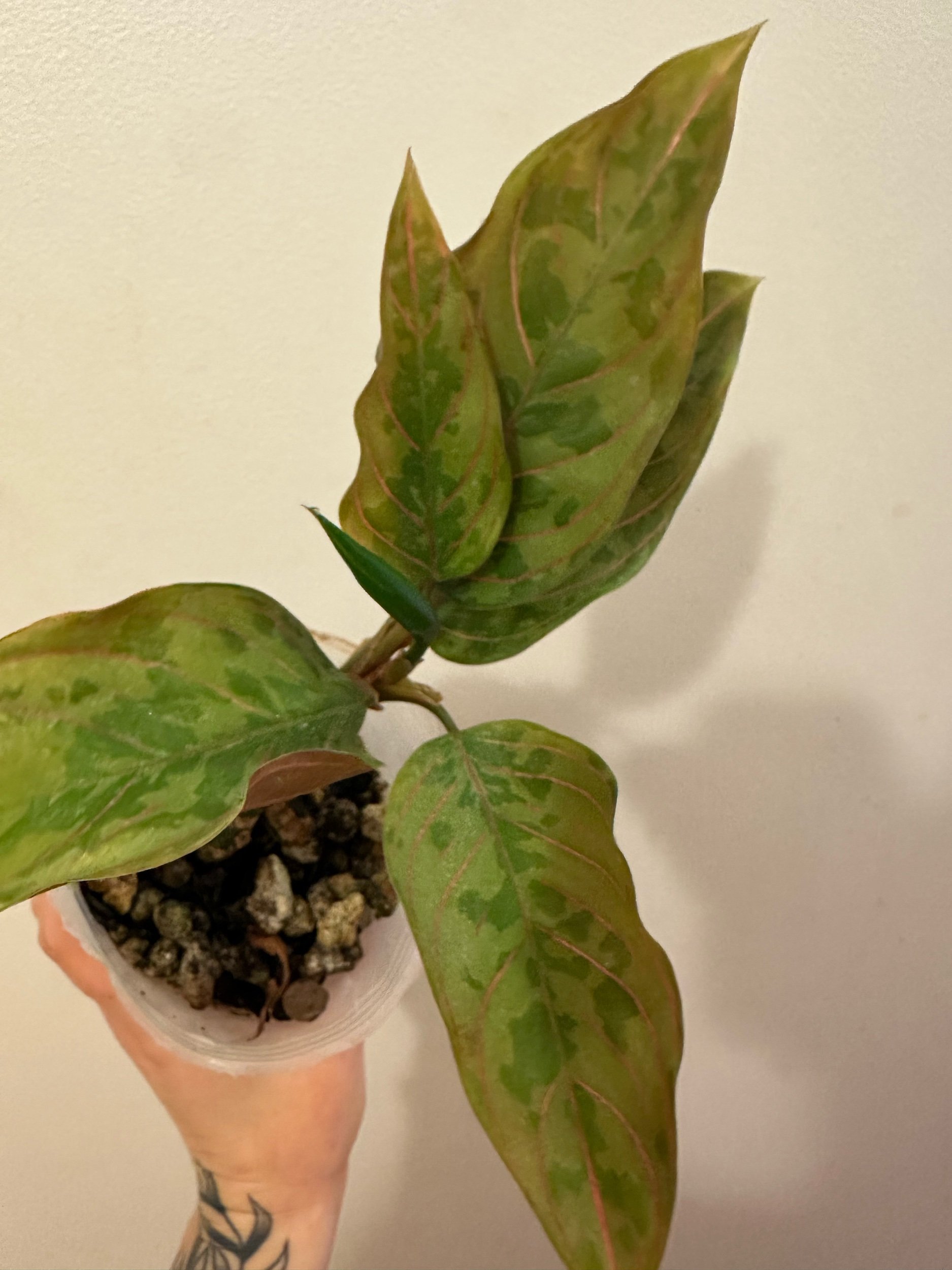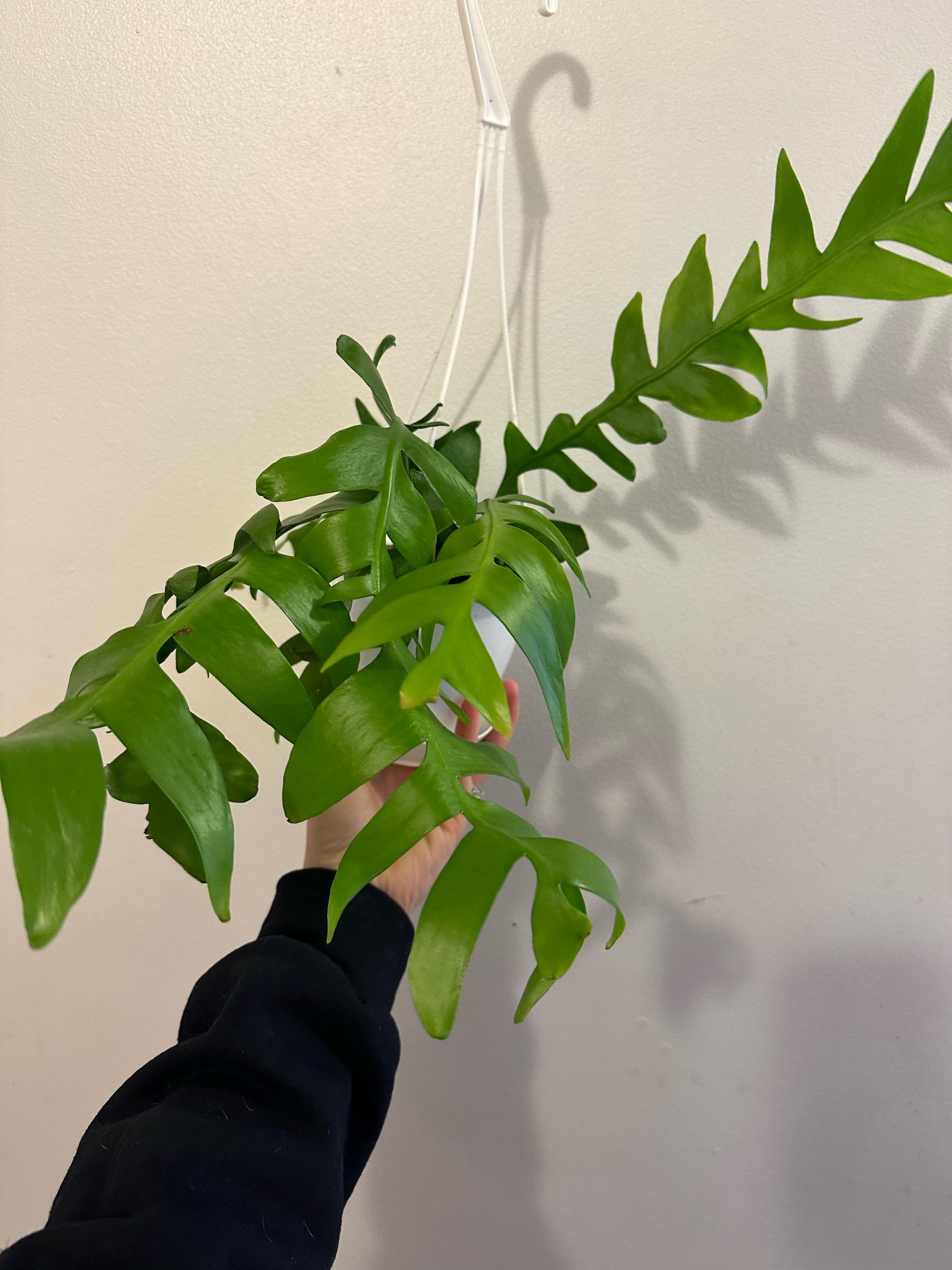String of Turtles (Peperomia prostrata) 4"
The String of Turtles (Peperomia prostrata) is a charming houseplant that brings a touch of whimsy and greenery to any space. Known for its small, round leaves that resemble turtle shells, this trailing succulent is perfect for hanging planters or as a delightful table centerpiece.
Care Tips
Light: Bright, indirect sunlight is ideal for a String of Turtles. Avoid direct sun, as it can scorch the leaves.
Water: Allow the soil to dry out between waterings. Depending on humidity and light conditions, this could mean watering every 1-2 weeks. Overwatering can lead to root rot, so it’s better to under-water than over-water.
Soil: Use a well-draining potting mix. A cactus or succulent mix works great, or you can create your own by mixing regular potting soil with perlite or sand.
Humidity: This plant thrives in higher humidity but can adapt to normal household levels. If your environment is particularly dry, consider misting occasionally.
Fertilizer: Feed with a balanced liquid fertilizer diluted to half strength during the growing season (spring and summer) every month.
Propagation: Propagation is easy and can be done through leaf or stem cuttings, allowing you to expand your collection or share with friends.
Troubleshooting
Yellow Leaves: This may indicate overwatering or poor drainage. Check the moisture level and adjust your watering schedule if necessary.
Leggy Growth: Insufficient light can cause the plant to stretch. If you notice this, move it to a brighter spot.
Final Thoughts
The String of Turtles is not just a lovely plant; its unique appearance makes it a conversation starter. With the right care, it will grow beautifully, adding a delightful touch of nature to your home. Enjoy nurturing this lovely little plant!
The String of Turtles (Peperomia prostrata) is a charming houseplant that brings a touch of whimsy and greenery to any space. Known for its small, round leaves that resemble turtle shells, this trailing succulent is perfect for hanging planters or as a delightful table centerpiece.
Care Tips
Light: Bright, indirect sunlight is ideal for a String of Turtles. Avoid direct sun, as it can scorch the leaves.
Water: Allow the soil to dry out between waterings. Depending on humidity and light conditions, this could mean watering every 1-2 weeks. Overwatering can lead to root rot, so it’s better to under-water than over-water.
Soil: Use a well-draining potting mix. A cactus or succulent mix works great, or you can create your own by mixing regular potting soil with perlite or sand.
Humidity: This plant thrives in higher humidity but can adapt to normal household levels. If your environment is particularly dry, consider misting occasionally.
Fertilizer: Feed with a balanced liquid fertilizer diluted to half strength during the growing season (spring and summer) every month.
Propagation: Propagation is easy and can be done through leaf or stem cuttings, allowing you to expand your collection or share with friends.
Troubleshooting
Yellow Leaves: This may indicate overwatering or poor drainage. Check the moisture level and adjust your watering schedule if necessary.
Leggy Growth: Insufficient light can cause the plant to stretch. If you notice this, move it to a brighter spot.
Final Thoughts
The String of Turtles is not just a lovely plant; its unique appearance makes it a conversation starter. With the right care, it will grow beautifully, adding a delightful touch of nature to your home. Enjoy nurturing this lovely little plant!
The String of Turtles (Peperomia prostrata) is a charming houseplant that brings a touch of whimsy and greenery to any space. Known for its small, round leaves that resemble turtle shells, this trailing succulent is perfect for hanging planters or as a delightful table centerpiece.
Care Tips
Light: Bright, indirect sunlight is ideal for a String of Turtles. Avoid direct sun, as it can scorch the leaves.
Water: Allow the soil to dry out between waterings. Depending on humidity and light conditions, this could mean watering every 1-2 weeks. Overwatering can lead to root rot, so it’s better to under-water than over-water.
Soil: Use a well-draining potting mix. A cactus or succulent mix works great, or you can create your own by mixing regular potting soil with perlite or sand.
Humidity: This plant thrives in higher humidity but can adapt to normal household levels. If your environment is particularly dry, consider misting occasionally.
Fertilizer: Feed with a balanced liquid fertilizer diluted to half strength during the growing season (spring and summer) every month.
Propagation: Propagation is easy and can be done through leaf or stem cuttings, allowing you to expand your collection or share with friends.
Troubleshooting
Yellow Leaves: This may indicate overwatering or poor drainage. Check the moisture level and adjust your watering schedule if necessary.
Leggy Growth: Insufficient light can cause the plant to stretch. If you notice this, move it to a brighter spot.
Final Thoughts
The String of Turtles is not just a lovely plant; its unique appearance makes it a conversation starter. With the right care, it will grow beautifully, adding a delightful touch of nature to your home. Enjoy nurturing this lovely little plant!

